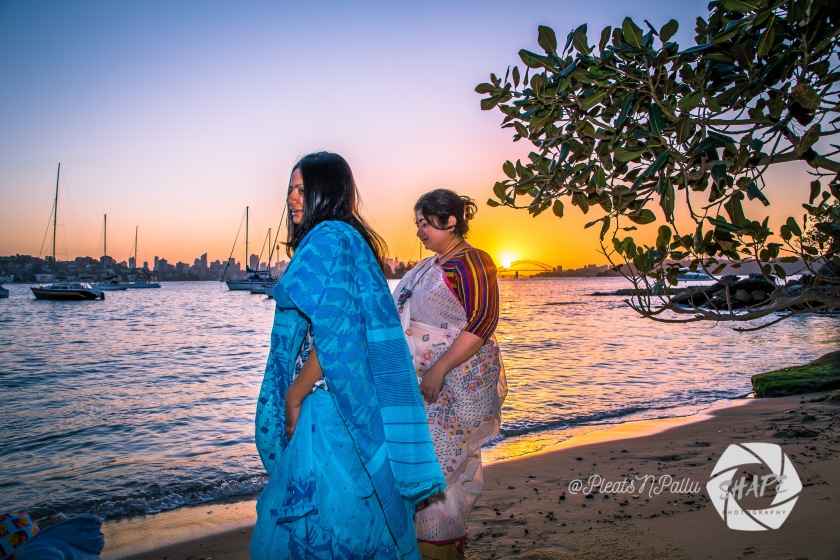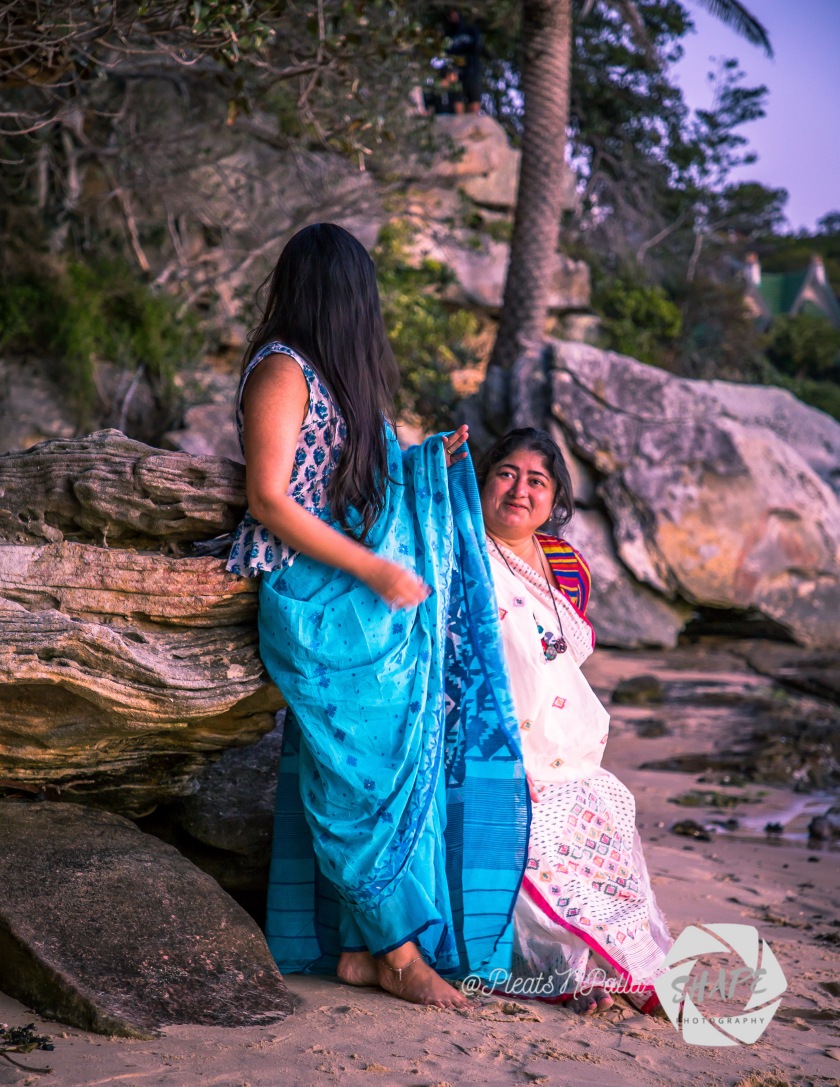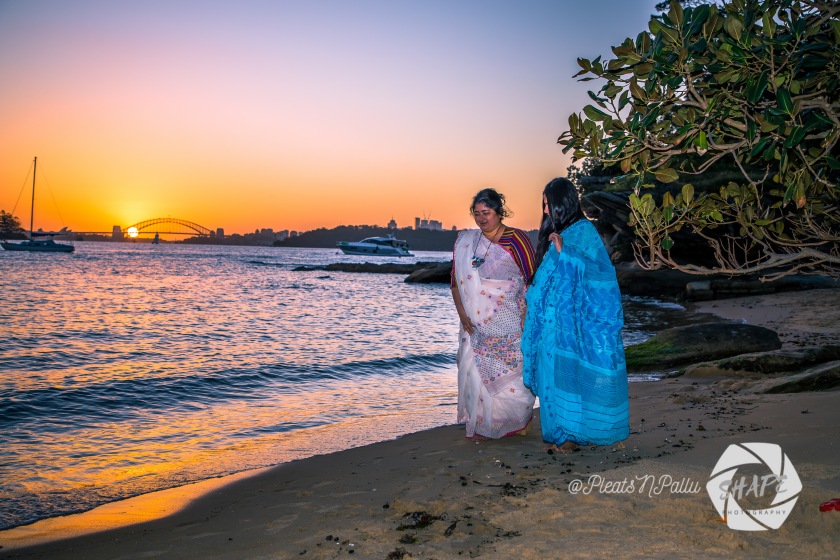A set of jamdani sarees framed by a quintessential Sydney harbour sunset…



Photos: Vincent Boyer (Say hi on instagram @vincetravelbook)
In these photos Koel (in the cream saree) is wearing a West Bengal Jamdani with a blouse made out of a noil silk stole and I am wearing a Dhakai jamdani with a block print top.
We both prefer the West Bengal taant jamdani because we don’t like the loose/coarser weave of the fabric from Bangladesh and find their motifs less delicate.
Both of us are also very picky about the design elements we like on our jamdanis, preferring the more intricate traditional patterns to more new age innovations.
The highly skilled master weavers of the Basak community moved from Tangail in Bangladesh to West Bengal during the 1947 partition of India as well as the 1971 war for Bangladesh’s freedom from Pakistan. They predominantly settled in and around Kalna in Purba Bardhaman district and Santipur in Nadia district, well-known for traditional handloom fabrics. Weavers from this community now produce some of the most intricate jamdani textiles.
The jamdani textiles incorporate an extra weft insertion technique which means that with this procedure, artistic motifs are produced by a non-structural weft, in addition to the standard weft that holds the warp threads together. The standard weft creates a fine, sheer fabric while the supplementary weft with thicker threads adds the intricate patterns to it.
Each of the supplementary weft motifs are added manually by interlacing yarn with fine bamboo sticks using individual spools.
A handloom textile is exactly what the word suggests: a hand (or foot)-operated loom is used to weave textiles without the use of electricity – on either pit or frame looms. It is the oldest textile production technique which goes back more than 2,000 years in India.
If you are keen to know more about this weave please check out my previous posts featuring vintage jamdani sarees here, here and here. In this post below, I have tried to list a few ways to ensure you are buying the real deal and can tell the difference between an actual handloom jamdani and the many inferior powerloom versions floating in the marketplace:
- Carefully check the back of the fabric: If you want to recognise a true blue jamdani always check the back of the fabric for parallel looping lines from the supplementary weft threads of the motifs. The weaver cuts the extra weft yarn to the length that they will need and then the same thread curls pulled back and forth. After each pull, the loom is pedalled, adding an extra weft and tightening the design.
In a fake jamdanis, the edges of the motif are cut with a scissors and don’t interlace with each other. So if you see threads hanging loose/sticking out at the back, it means that the saree is an imitation and not the real deal, which also means it is not hand woven . It is not handloom.
2. Pay attention to the finishing of the motifs: Look very closely at the extra weft designs, they should have sharply defined edges, the front and the back should be almost identical.
Also with authentic handloom jamdanis, the top part that is meant to be tucked-in, is plain and does not have the border motifs.
And the motifs are equally smooth both at the front and the back, roughness at the back and edges are common in the imitations.
3. Examine the fabric and yarn closely: A true blue jamdani is made only with cotton yarn, so be very wary of phrases like resham, soft silk, silk cotton etcetera. Insist on a burn test if necessary. I have come across vintage mulberry silk jamdani sarees from over three decades ago, they are not commonly found anymore unless someone specifically creates a collection.
If your heart hankers for a silk jamdani, I’d recommend getting a mulberry silk Moirang Phee from Manipur, the weavers there are mostly female and use the supplementary weft technique as well.
4. Buy in person not online: Unless you are an expert or really familiar with the seller and trust them implicitly, do not buy these kinds of sarees online until you are confident. I have recently been badly burnt by an unscrupulous online reseller who has sold me a damaged piece that she now refuses to refund.
5. Touch and feel the textile: True blue handlooms have texture, the extra weft designs create a characteristic uneven-ness.
6. The best marker is the price: If you’re getting a jamdani saree with intricate motifs all over for very little money it is highly like to be a fake! These textiles are labour intensive to weave and in this case the price truly will reflect the quality.
7. Buy from state emporiums and/or reliable stores that stock jamdanis with a handloom mark: I have found many stunning jamdanis at Biswa Bangla and a few many moons ago at Tantuja. You can always insist on buying handloom certified textiles at both these and many other retailers.
There is enough academic research being published about handloom textiles, there are tonnes of books available with photos from up close that there is no excuse for any seller to get away with spreading misinformation and selling dodgy products.